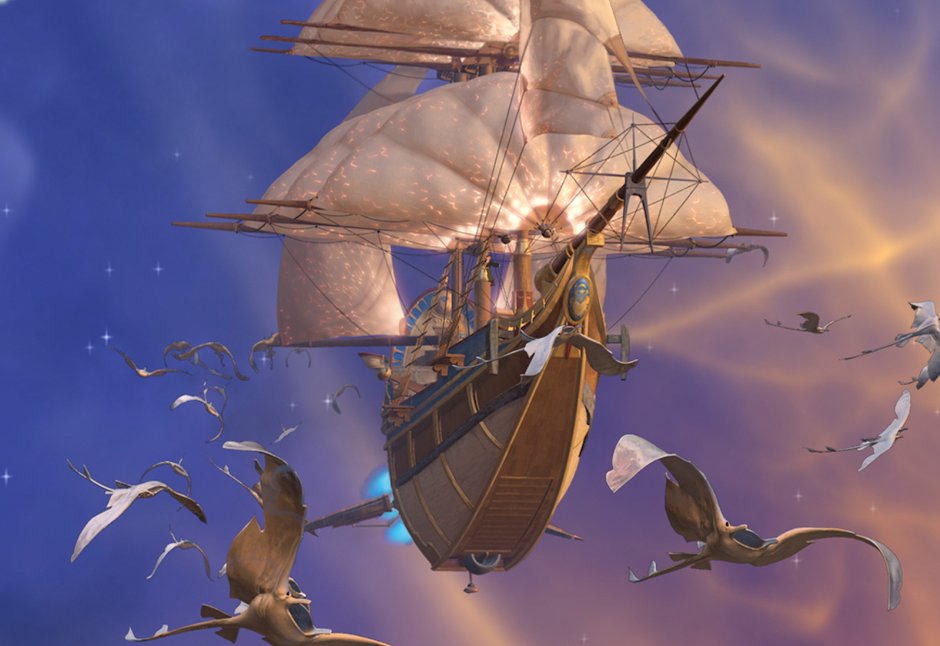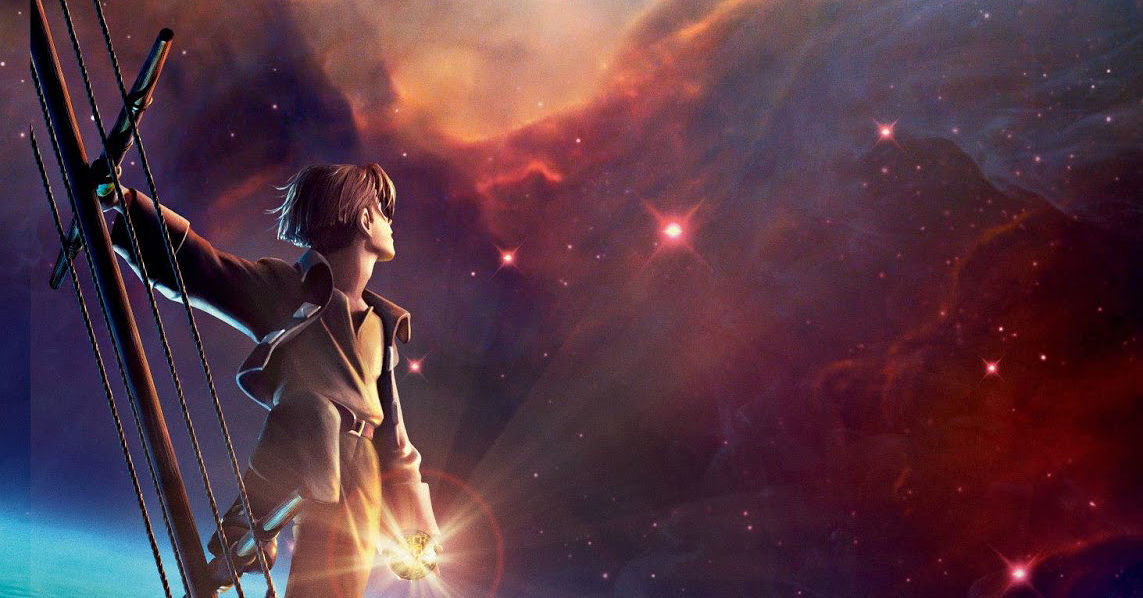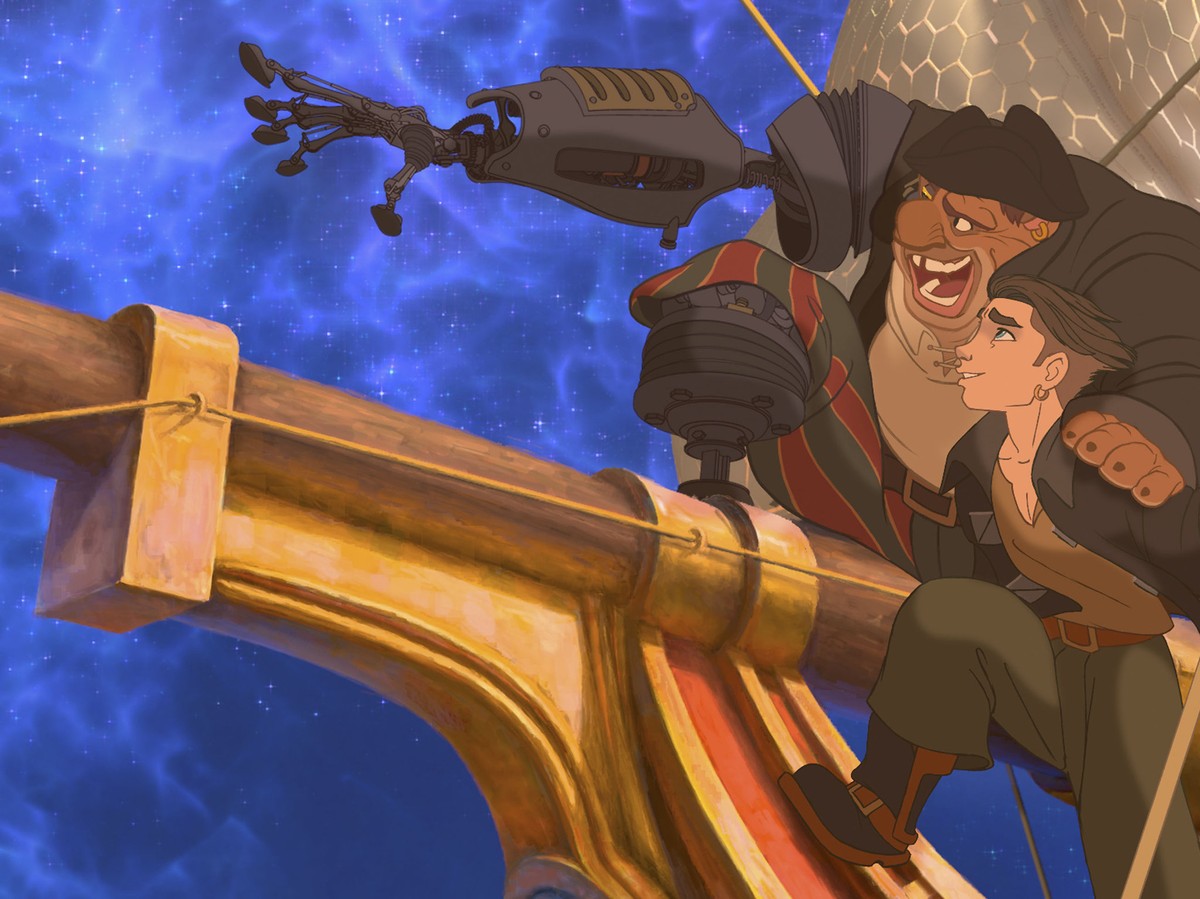TREASURE PLANET. Atypical Disney Movie

For many, this might seem obvious, but it’s worth emphasizing again—Walt Disney Pictures, one of the most prominent film studios in the history of the industry, has never been particularly known for its originality in the content it produces. The studio mastered the difficult art of taking stories that have already echoed in culture—fairy tales, legends, or novels—and transforming them into something fresh and new. The same is true for “Treasure Planet”, an animated film by John Musker and Ron Clements.
The screenplay they wrote was based on “Treasure Island”, the famous adventure novel by Robert Louis Stevenson, published in 1883. The book, which set the template for all pirate stories, popularized their image in culture, using the iconic example of Long John Silver. Although Stevenson’s work has been adapted for the screen numerous times, it’s hard to consider “Treasure Planet”, made in 2002, as a typical example faithful to the original vision. And that is the film’s greatest strength.

What was, for Stevenson, a nautical adventure novel became, for Musker and Clements, science fiction—or more specifically, a space opera in terms of narrative, and steampunk in terms of style. Rather than focusing on comparisons, one should marvel at the creative boldness of the adaptation, which, instead of simply replicating, reimagines the story. While Stevenson’s work was set in a maritime world, Musker and Clements created their own rich and fascinating universe. Hand-drawn designs for the ships and various locations are stunning, evoking a sense of wonder, which is crucial for enjoying science fiction.
However, what intrigued me most is the message within the story itself. The film’s loose and concise approach to Stevenson’s original exceptionally succeeds in conveying the well-known cultural myth of the lost boy, abandoned by his father, and consequently living with a belief in his own worthlessness. This is how we meet Jim Hawkins, a teenager struggling to find his place in life, serving mainly as a burden to his single mother. Everything changes when Jim finds a map leading to the legendary Treasure Planet. Without much hesitation, he joins the crew of the ship “R.L.S. Legacy” for an extraordinary interstellar journey toward a fascinating, mysterious goal.

In several ways, “Treasure Planet” is a very atypical Disney film. There is no romantic subplot revolving around the main character. Nor is there a textbook example of a villain, as the character of John Silver is far too complex to be labeled simply as such. The story seems designed to depict the process of the protagonist finding meaning in his life. The film’s MacGuffin, once again, is neither the titular planet nor the gold it holds. These are merely pretexts on Jim’s journey toward discovering his inner strength—a strength his father never showed him, one he had to find on his own.
Interestingly, this transformation is symbolically portrayed in the film. At the beginning, Jim wears a black t-shirt, symbolizing that he is his own worst enemy for most of the story, tripping over his own lack of self-belief. But as the adventure unfolds, his shirt changes from black to light brown, symbolizing the internal changes happening within him. The turning point comes when Jim realizes the motivations of his mentor and friend. From that moment on, he knows that to achieve his goal, he must rely on himself. The ending leaves no doubts. When Jim, now more appropriately called James, returns home to his mother wearing white, it’s clear that his soul has finally found peace.
Yes, I agree—the main message of “Treasure Planet” may sound like a simplistic cliché. However, it’s a simplicity that is universal, evoking the same familiar and safe emotions. And in this case, it is presented with incredibly inventive form. I truly admire this kind of adaptation that, while straying far from the original, proves that creative reimagining is its own kind of artistry—an art that isn’t easy.

In this case, though the film was meticulously prepared over the course of several years, it wasn’t fully appreciated by everyone. Despite the earlier commercial successes of Musker and Clements’ Disney films (“The Little Mermaid”, “Aladdin”, “Hercules”), “Treasure Planet” turned out to be a painful failure. It cost $140 million to make, but earned only about $100 million at the box office.
It’s a shame, a great shame, that this vision didn’t receive unanimous praise. You’d have a hard time finding another animated film that so energetically and creatively reinterprets popular myths, blending the best traditions of two types of science fiction—space opera and steampunk.

